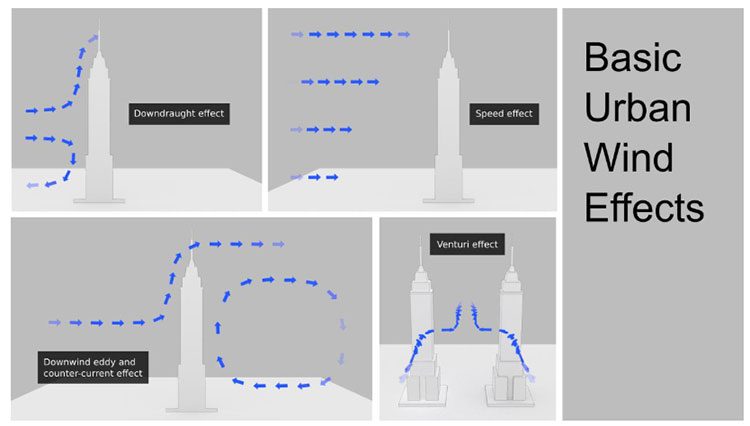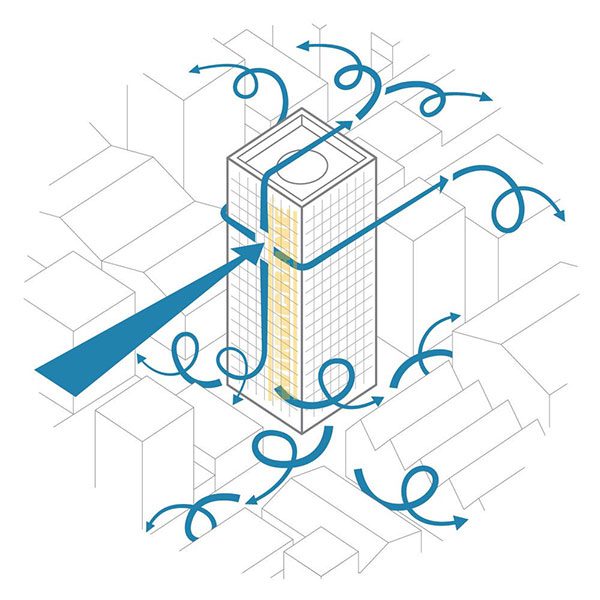We know that wind is the movement of air streams, formed by changes in atmospheric pressure, typically flowing from areas of high pressure to low pressure.
Constructing a structure creates a barrier that disrupts the normal flow of wind, often resulting in two common phenomena:
- Downdraught Effect: This occurs when wind strikes a building, gets obstructed, and with no other place to go, it is forced downward, upward, or around the edges of the building. The downward air pressure accelerates the wind speed in the area below the structure.
- Venturi Effect: Imagine tipping a bottle of water upside down; because the neck of the bottle is narrow, the water flows out more forcefully compared to using a bottle with a neck and base of similar size.

When wind blows through a narrow space between buildings, pressure decreases and wind speed increases.
In other words, when a fluid passes through a narrow section of a pipe, the initial pressure drops, but the velocity simultaneously increases. Similarly, when wind flows through a narrow space between buildings, pressure decreases and wind speed increases.
Typically, when constructing a building, in addition to numerous other calculations, it is essential to simulate the wind model’s impact on that building. This is primarily to ensure the structural integrity and safety of the building, and secondarily to minimize the occurrence of the aforementioned phenomena.

Depending on the strength of these effects, wind at ground level can be twice as strong as when it is moving at higher altitudes.
The effects mentioned above can pose a safety hazard to those living and working below the building. Depending on the intensity of these effects, ground-level wind can be twice as strong as the wind moving several dozen meters above.
For example, a wind speed of around 40 km/h can be amplified to 55 km/h below the building. It is known that a wind speed of just 60 km/h is sufficient to blow a person away.


















































